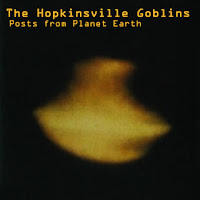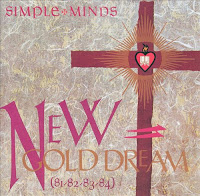People do messed up things when they’re drunk don’t they. Most times you get away with it with just a red face and some humble pie. Other times the effects are more long lasting. Take Steve Jones for example. The Sex Pistols gonzo guitarist was always destined for infamy of one kind or another, but the planets really lined up when the band was invited onto the Bill Grundy Today show on 1 December 1976 as a last minute replacement for Queen. Steve and crew were dumped in the hospitality room with free food and booze and no adult supervision. By the time the five minute call arrived Steve was well into his second bottle of wine.
As you can see, Bill Grundy himself was a jaded old windbag
with nothing but contempt for the motley crew of urchins that soon draped
themselves across his furniture, followed by a gaggle of equally dodgy looking
supporters forming a ring behind them. One of said supporters is the soon-to-be-infamous-in-her-own-right
Siouxsie Sioux, who quickly caught old Bill’s eye. After a gnarly clip of the
band performing No Fun, some brief and fairly mindless banter with the band
ensues, before Bill receives some lip from our Siouxsie when he turns his
attention the supporter’s way. Not missing a beat he quickly fires a sleazy
pass at her as a come back. That's the cue for Steve (who is obviously a gent
deep down inside) to come to her aid with a volley of beepable bullets aimed
directly at old Bill’s head, abetted by Bill himself giving it the old “is that
all you’ve got” bravado. Quality entertainment! But not in 1976. The reaction
in the press was just north of completely over the top. People just didn’t
swear on the telly back then old bean.
From that moment on the otherwise invisible street
phenomenon known as Punk Rock became tabloid fodder and became engraved in the
history of the world as Bad Music played by Bad People.
The reality was that groups of young kids in Britain and America had been making music on a
DIY level for at least two years prior to the Pistols appearance on the Grundy
show, but none of them had a label for what they did. This was probably because
each of these groups had quite different approaches to their creative
endeavours. You couldn’t throw a net around them all and say “that’s punk rock”
like you could two years later. In New
York everything was centred on CBGBs where groups as
varied as The Ramones, Suicide and Mink DeVille treaded the same boards, with
the only similarity between them being that none of them sounded like Linda
Rondstat. In Britain
the Pistols were in the audience at 101ers gigs where pre-Clash Joe Strummer
was playing lumpy R&B, while down the road polio victim Ian Dury was
breaking all the rules by singing in cockney slang. Throbbing Gristle were
melding primitive electronics with nihilistic performance art while up north
Mark E Smith and the Fall were performing poetry pieces over simple
Casiotone-and-guitar backing music. None of this was a threat to the
established order and it probably would have stayed that way if Steve hadn’t
hit the Blue Nun quite as hard in the Thames TV green room.
As Punk Rock had now been labelled as A Risk To Society it
needed to be formally identified. The media obliged by defining Punk Fashion so
that old ladies would know who to avoid in the street. Punk rockers themselves
got into the football crowd mentality by defining their own take on the music,
willingly supported by kingpins like Johnny Rotten who threw down the lines of
acceptable punkness for everyone punk enough to follow (including members of
his own band as it turned out). Anything identifiable as being un-punk was
disparaged and banished from the new punk order. Trenches were dug in society
around the new stink in town, protests were held, music was banned, letters
flew at the editor. The end result on the street was if you were punk you were
either in or out based on the simple recipe of having short fast songs with no
guitar solos and no fancy words. That was the uniform and badge you wore. That
and short hair. It was ironic that a DIY movement initially based on creativity
and individuality was overtaken by an omnipresent facism that banished
individual creativity in favour of mob rules.
So why are we worried? Well, we’re not really, but the
lesson here is that unless you are determined, your attempts at individual
expression will be threatened by turdheads with their own barrow to push. Not
even muti-national corporate turdheads, but the turdheads in your very
neighbourhood (I feel a song coming on, don’t you…).
For those who are interested in recordings made before punk
became a dirty word there are a few recordings that are well worth checking
out. The aforementioned 101ers and Ian Dury. The Fall. The initial output of The
Damned, ATV and The Boys in the UK.
Likewise The Ramones, Television and The Modern Lovers in the States. All high
energy music providing all important teenage kicks without the unimportant
Rules. Don’t get me wrong, all of the stuff produced during the initial punk
explosion was vital music, and its impact went far and wide, but it became very
derivative very fast and by 1978 was virtual self-parody. Fortunately there
were enough creative geniuses in that first wave of punk to move on into
completely new territory without getting bogged down. Some astonishingly good
music was recorded in the period 1978-1982 in all different corners of the
world.
It’s geniuses like those that eliminate the gravity that
might otherwise hold the Hopkinsville Goblins down. How high do they fly? Check
out the links below and judge for yourself:
Get it on Amazon, I-Tunes, Spotify, Deezer, Google Play and Bandcamp, or from any of the purveyors of fine sounds listed on this site.
Or try before you buy on Soundcloud or Youtube.










